Key takeaways:
- Selective mutism is a complex anxiety disorder that affects children’s ability to speak in certain social situations, rooted in anxiety rather than defiance.
- Self-advocacy is essential for individuals with selective mutism, as it empowers them to communicate their needs and build confidence.
- Recognizing signs of selective mutism, such as avoidance behaviors and physical symptoms, is crucial for creating a supportive environment.
- Effective communication strategies, including calm conversations and visual aids, can significantly enhance an individual’s ability to express themselves.
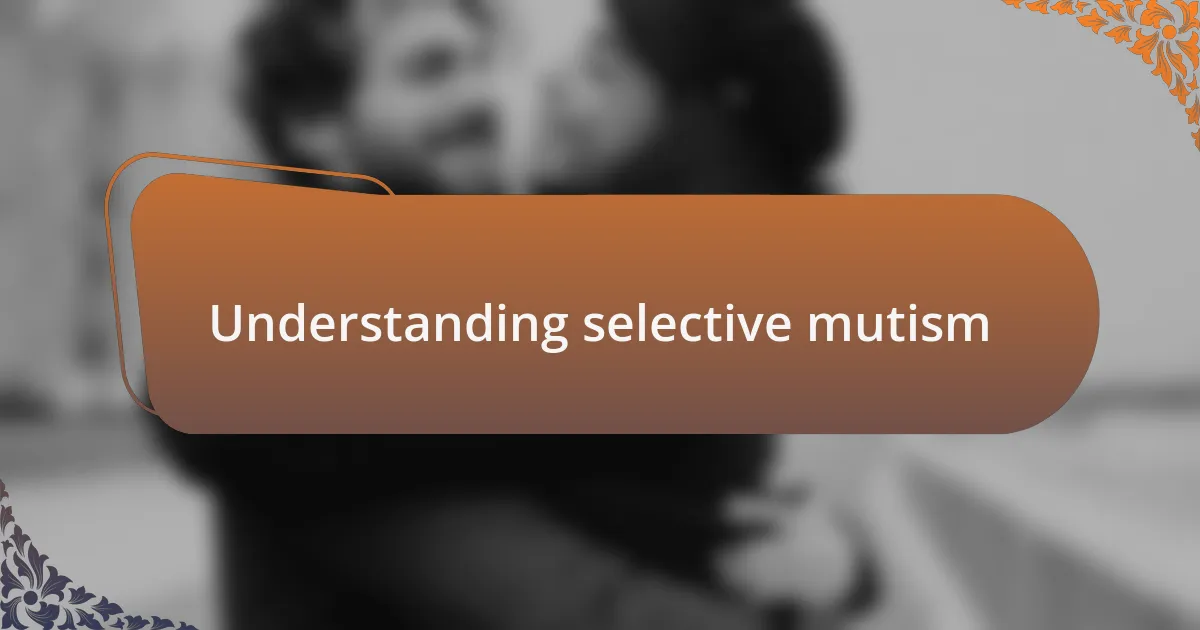
Understanding selective mutism
Selective mutism is a complex anxiety disorder that primarily affects children, causing them to be unable to speak in certain social situations despite having the ability to communicate verbally in comfortable settings. I still remember the feeling of dread that washed over me when I entered a classroom full of unfamiliar faces. It was as if my voice was stuck inside, while my heart raced at the thought of speaking up.
It’s important to recognize that selective mutism is not a choice or a sign of defiance; rather, it’s deeply rooted in anxiety. I often found myself wondering why I couldn’t just speak like everyone else. Understanding this distinction is crucial, as it helps to eliminate stigma and promotes empathy towards those experiencing this challenge. Have you ever felt so overwhelmed in a social setting that words just wouldn’t come out? I know that feeling all too well.
The journey of understanding selective mutism requires patience, both for the individual and their support system. I recall moments when my family tried their best to coax me out of my shell—it wasn’t about pushing me to speak but creating a safe space where I felt seen. This nuanced understanding can pave the way for more effective support and guide families to foster a nurturing environment that encourages gradual progress rather than pressure.
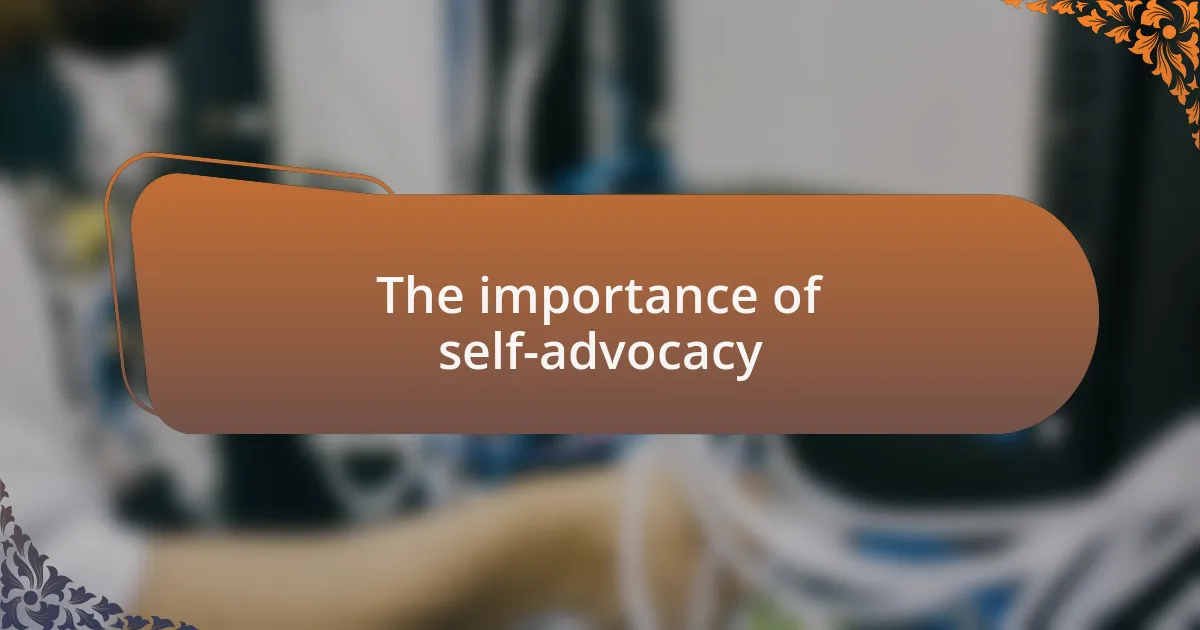
The importance of self-advocacy
Self-advocacy is crucial for anyone facing the challenges of selective mutism, as it empowers individuals to communicate their needs and feelings. I recall a time when I finally mustered the courage to share with my teacher how my anxiety prevented me from speaking in class. That simple act of voicing my struggle not only alleviated my fear but also fostered a deeper understanding between us, enabling her to support my journey more effectively.
When individuals learn to advocate for themselves, they gradually build confidence and resilience. I remember attending a support group where we shared our experiences and strategies. Hearing others articulate their emotions and strategies encouraged me to embrace my voice, no matter how quaky it felt at times. Have you ever felt that weight lift when someone else understands your feelings? That’s the power of self-advocacy—it can create a sense of community and validation that we often crave.
Ultimately, self-advocacy lays the groundwork for improved social interactions and personal growth. Each time I spoke up about my needs, I discovered new layers of bravery within myself. It’s a journey filled with setbacks and victories, but advocating for oneself is a powerful step toward overcoming the barriers imposed by selective mutism. Trust me, the reward of being heard is well worth the effort.

Recognizing signs of selective mutism
Selective mutism often manifests in a variety of subtle signs, making it crucial for friends, family, and educators to recognize them early on. A child might speak freely at home but fall silent in social settings or at school. I remember feeling an overwhelming urge to speak but finding my voice completely vanished in the classroom, leaving me frustrated and isolated.
Another key sign is avoidance behavior. If a child consistently avoids situations that require speaking, it’s a telltale indicator of selective mutism at play. I used to dread school presentations; the thought of standing in front of my peers felt like standing on a tightrope over a canyon. Has anyone else felt those butterflies turn into a full-blown storm in your stomach when asked to speak?
Physical signs can also accompany verbal silence. Common indicators include fidgeting, avoiding eye contact, or clinging to a parent or guardian in unfamiliar settings. I clearly remember how my palms would sweat and my heart raced whenever I was called to participate in class. These signs are more than just shyness; understanding them can be the first step toward creating an environment where the individual feels safe and supported.

Strategies for effective communication
Effective communication is a cornerstone in navigating the complexities of selective mutism. One strategy that truly helped me was practicing calm, one-on-one conversations in low-pressure environments. I remember sitting on the floor with a trusted friend, sharing stories without judgment. This practice allowed me to find my voice in a safe space, slowly building my confidence. Have you ever noticed how much easier it feels to communicate when the stakes aren’t high?
Using visual aids and non-verbal cues can bridge communication gaps as well. I distinctly recall the first time I used simple drawings to express my feelings during a difficult moment. It felt liberating to convey emotions through images when words failed me. Wouldn’t it be wonderful if every child could explore their thoughts and feelings in diverse ways, beyond just speaking?
Establishing a routine can also enhance communication efforts. I found that having conversation starters prepared in advance alleviated some of the anxiety. For example, discussing a favorite book or show before heading into a social situation made it easier to engage. Can you picture how having a few go-to topics can pave the way for meaningful interactions? Identifying strategies that work for the individual can transform the communication experience from daunting to empowering.
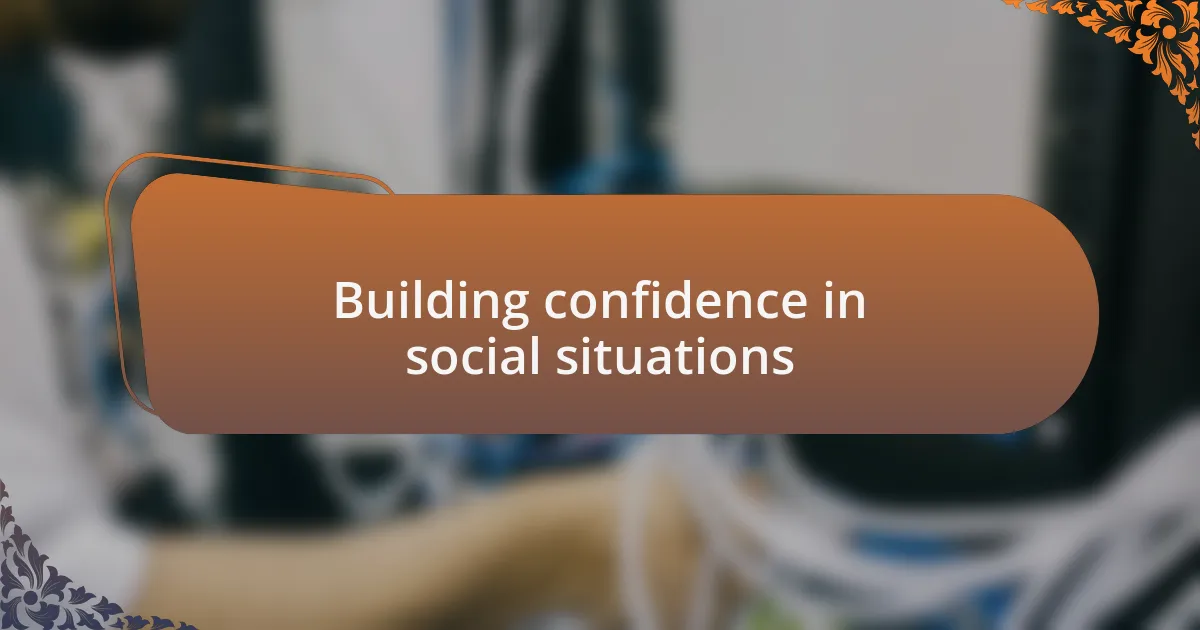
Building confidence in social situations
Building confidence in social situations often starts with small, manageable steps. I recall when I decided to join a local club centered around my interest in photography. Initially, I felt anxious at the thought of speaking in a group, but with each meeting, I noticed that sharing my photos became easier. Isn’t it amazing how passion can act as a bridge to communication?
Sometimes, I found that role-playing various social scenarios with a friend made a world of difference. I vividly remember practicing how to introduce myself and engage in small talk as we acted out different situations. It felt silly at first, but I realized that rehearsal turned my anxiety into familiarity. Have you ever wished you could rehearse conversations before they happen?
Celebrating small victories can also significantly boost one’s confidence. I cherished the moments when I spoke up, even if it was just asking for help at a store or joining a group discussion. Each success, no matter how tiny, fueled my belief in my ability to communicate. Doesn’t it feel rewarding to acknowledge our progress, even if it seems minor at the time?
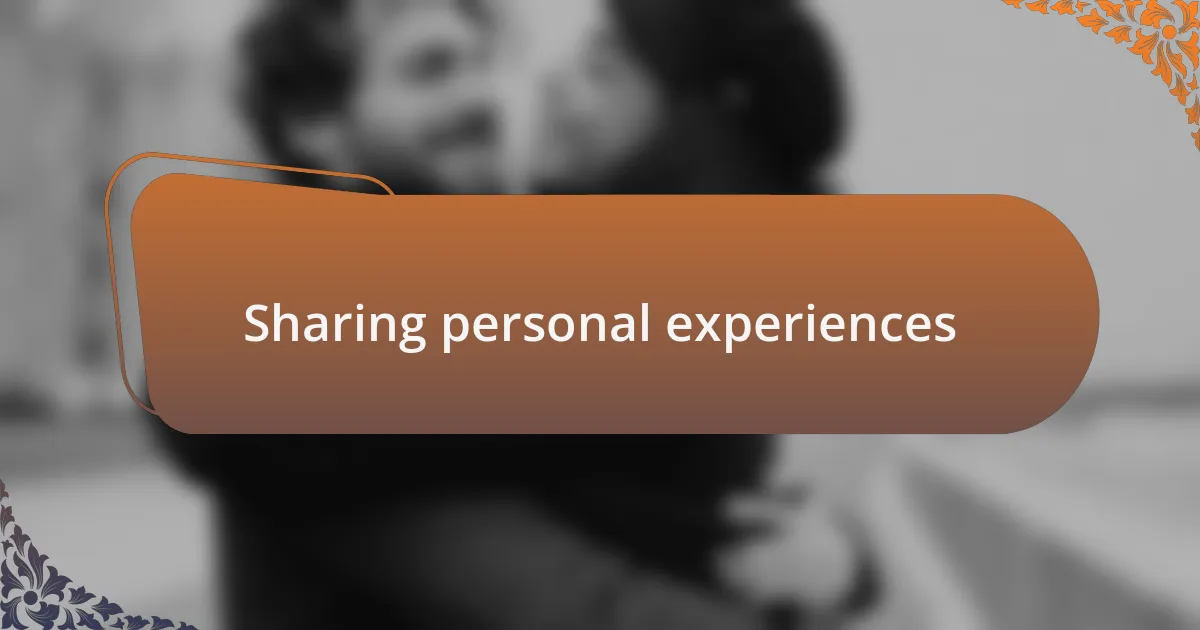
Sharing personal experiences
Sharing personal experiences can be a powerful motivator for self-advocacy. I remember attending a workshop on Selective Mutism where participants shared their stories. Hearing others speak openly about their struggles and triumphs shifted something within me. It was comforting to know I wasn’t alone; have you ever felt that sense of relief when you connect with someone who understands your journey?
My decision to share my own story during that workshop was daunting. I felt vulnerable, yet once I began to speak about my experiences, I realized how liberating it was. Each word felt like a piece of armor against my fears. What if sharing our struggles could be a step toward empowerment?
Looking back, the act of sharing opened doors to deeper conversations. Once I started sharing my experiences, others felt encouraged to listen and share theirs too. It created a safe space where vulnerability turned into strength. Have you noticed how sharing can spark a sense of community and understanding? The connections I made through storytelling enriched my journey to self-advocacy in ways I never expected.
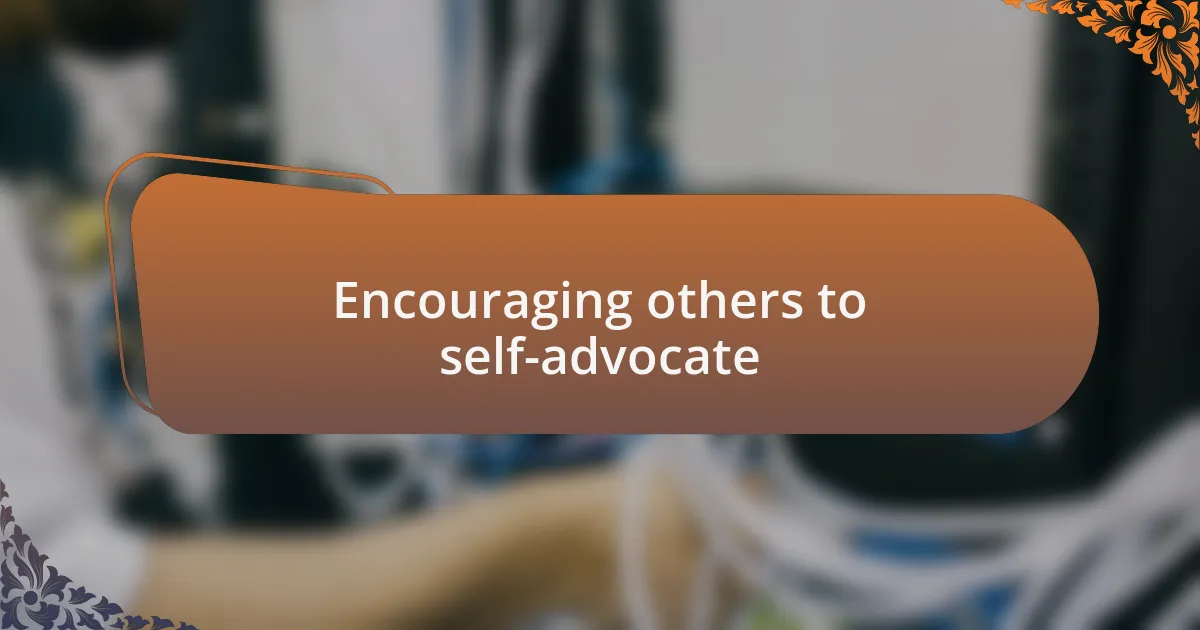
Encouraging others to self-advocate
Encouraging others to self-advocate starts with recognizing their unique voices. I once attended a support group where a shy participant surprised everyone by sharing a powerful moment from their life. The room filled with an encouraging energy, and I couldn’t help but wonder: what if we all took that leap of faith? Each small act of encouragement can spark a profound change in someone’s willingness to speak up.
In another instance, I vividly recall a time when my friend hesitated to voice her needs during a parent-teacher meeting. I gently nudged her, reminding her of her right to express her thoughts. Seeing her transform from hesitant to assertive as she shared her perspective was a remarkable sight. Isn’t it incredible how a little support can help someone find their voice?
Every time I celebrate the small victories of others, like when they advocate for themselves in difficult situations, I feel like I’m playing a part in their empowerment journey. It’s like witnessing a flower bloom; you can’t help but smile. Encouragement can lead to self-discovery and confidence for both the giver and the receiver. Have you ever cheered someone on and felt that shared joy of accomplishment?